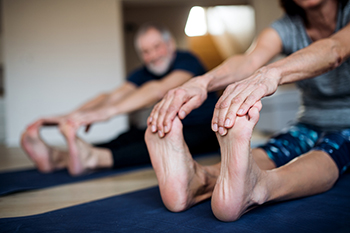 Foot wounds are open cuts or sores that form on the feet. There are several different types of foot wounds. Diabetic foot ulcers (DFUs) occur due to diabetes or diabetic neuropathy. They can appear anywhere on the foot, but often appear on the big toes, balls of the feet, and the heels. These wounds typically heal slowly and poorly. Venous stasis ulcers appear on the ankles or legs due to vein damage. Arterial ulcers are caused by arterial insufficiency or poor circulation, and usually occur between or on the tips of the toes and along the outer ankles. A pressure ulcer is caused by foot immobility or by wearing improper shoes. They are usually seen on the heels or ankles. If you have any wounds on your feet, it is strongly suggested that you seek the care of a podiatrist.
Foot wounds are open cuts or sores that form on the feet. There are several different types of foot wounds. Diabetic foot ulcers (DFUs) occur due to diabetes or diabetic neuropathy. They can appear anywhere on the foot, but often appear on the big toes, balls of the feet, and the heels. These wounds typically heal slowly and poorly. Venous stasis ulcers appear on the ankles or legs due to vein damage. Arterial ulcers are caused by arterial insufficiency or poor circulation, and usually occur between or on the tips of the toes and along the outer ankles. A pressure ulcer is caused by foot immobility or by wearing improper shoes. They are usually seen on the heels or ankles. If you have any wounds on your feet, it is strongly suggested that you seek the care of a podiatrist.
Wound care is an important part in dealing with diabetes. If you have diabetes and a foot wound or would like more information about wound care for diabetics, consult with one of our podiatrists from Canonsburg Podiatry Associates. Our doctors will assess your condition and provide you with quality foot and ankle treatment.
What Is Wound Care?
Wound care is the practice of taking proper care of a wound. This can range from the smallest to the largest of wounds. While everyone can benefit from proper wound care, it is much more important for diabetics. Diabetics often suffer from poor blood circulation which causes wounds to heal much slower than they would in a non-diabetic.
What Is the Importance of Wound Care?
While it may not seem apparent with small ulcers on the foot, for diabetics, any size ulcer can become infected. Diabetics often also suffer from neuropathy, or nerve loss. This means they might not even feel when they have an ulcer on their foot. If the wound becomes severely infected, amputation may be necessary. Therefore, it is of the upmost importance to properly care for any and all foot wounds.
How to Care for Wounds
The best way to care for foot wounds is to prevent them. For diabetics, this means daily inspections of the feet for any signs of abnormalities or ulcers. It is also recommended to see a podiatrist several times a year for a foot inspection. If you do have an ulcer, run the wound under water to clear dirt from the wound; then apply antibiotic ointment to the wound and cover with a bandage. Bandages should be changed daily and keeping pressure off the wound is smart. It is advised to see a podiatrist, who can keep an eye on it.
If you have any questions, please feel free to contact our office located in Canonsburg and McMurray, PA . We offer the newest diagnostic and treatment technologies for all your foot care needs.




